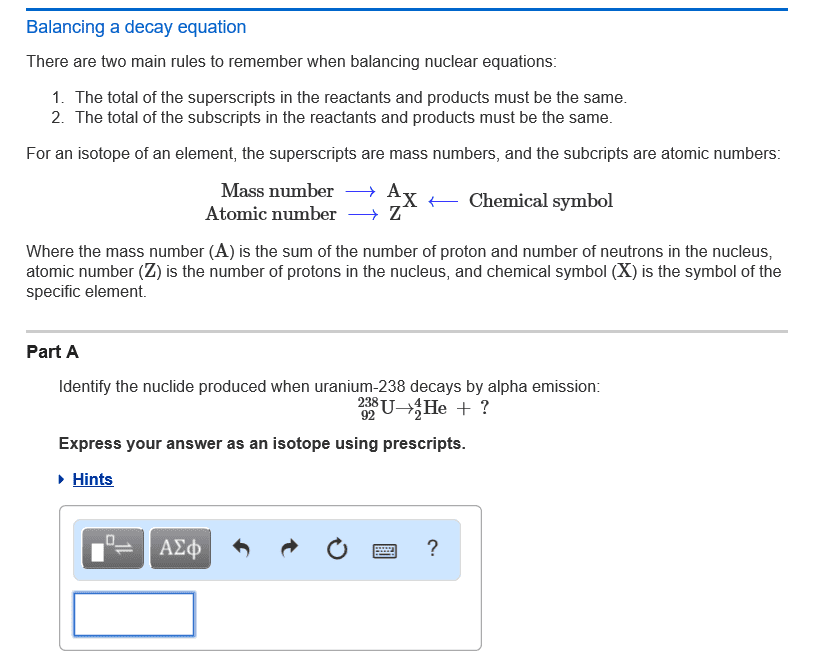| Nuclear Decay Equations Learning Goal: To predict the products of alpha emission, beta emission, positron emission, and electron capture. Radioactivity is the spontaneous emission of radiation from an unstable nucleus. There are five major types of radioactive decay: Alpha (α) radiation consists of helium nuclei. The helium nucleus is a small particle containing two protons and two neutrons (42He). Beta (β) radiation consists of electrons. In nuclear equations, the standard format for representing a beta particle using superscripts and subscripts is 0â1e. Positron emission results from the conversion of a proton in the nucleus to a neutron. The ejected positron is a particle that has the same mass as an electron but an opposite charge. In nuclear equations, the standard format for representing a positron using superscripts and subscripts is 01e . Electron capture is the capture of an inner shell electron by a proton in the nucleus. The process emits gamma (γ) radiation and results in a proton converting to a neutron. Gamma radiation consists of high-energy electromagnetic radiation. Gamma (γ) radiation consists of high-energy radiation, and contains no particles and thus they have no mass. In nuclear equations, the standard format for representing gamma radiation using superscripts and subscripts is 00γ. | Balancing a decay equation There are two main rules to remember when balancing nuclear equations: The total of the superscripts in the reactants and products must be the same. The total of the subscripts in the reactants and products must be the same. For an isotope of an element, the superscripts are mass numbers, and the subcripts are atomic numbers: Mass number ⶠAAtomic number ⶠZ X âµ Chemical symbol Where the mass number (A) is the sum of the number of proton and number of neutrons in the nucleus, atomic number (Z) is the number of protons in the nucleus, and chemical symbol (X) is the symbol of the specific element. Part A Identify the nuclide produced when americium-241 decays by alpha emission: 241 95Amâ42He + ? Express your answer as an isotope using prescripts. SubmitHintsMy AnswersGive UpReview Part Part B Identify the nuclide produced when phosphorus-32 decays by beta emission: 3215Pâ 0â1e + ? Express your answer as an isotope using prescripts. SubmitHintsMy AnswersGive UpReview Part Part C Identify the nuclide produced when fluorine-18 decays by positron emission: 18 9Fâ01e + ? Express your answer as an isotope using prescripts. SubmitHintsMy AnswersGive UpReview Part Part D Identify the nuclide produced when thallium-201 decays by electron capture: 201 81Tl+ 0â1eâ00γ + ? Express your answer as an isotope using prescripts. SubmitHintsMy AnswersGive UpReview Part |


